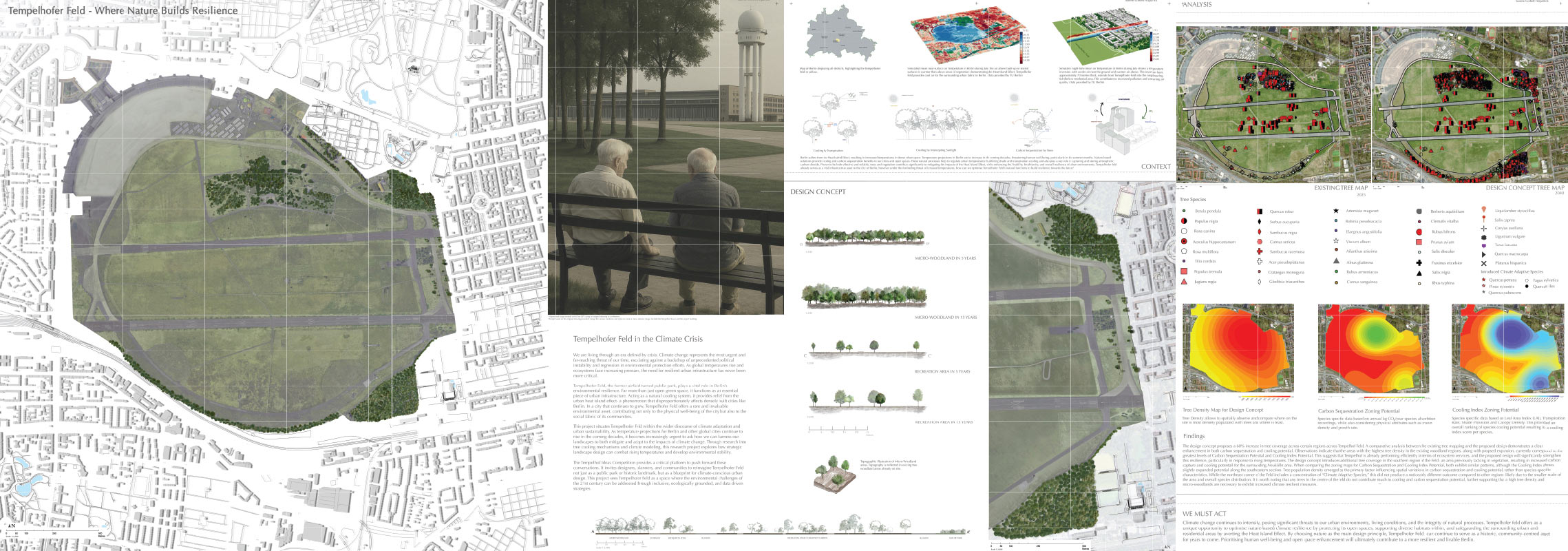



Climate change is one of the most pressing and unpredictable crises of our time. Despite global efforts, we continue to witness setbacks in environmental progress amidst increasing political instability. Berlin, a vibrant and densely populated city, faces a significant climate challenge: the Urban Heat Island Effect. With temperatures projected to rise in Berlin in the coming decades, this phenomenon poses a growing risk to human health and the city’s overall functionality, particularly during the summer months.
Tempelhofer Feld – Where Nature Builds Resilience is a design strategy grounded in scientific principles and research-based analysis. It repositions Tempelhofer Feld, a vast open space in South Berlin, as a vital piece of green infrastructure. By leveraging its potential for climate adaptation, the proposal introduces micro-woodlands and strategic tree planting to enhance resilience within the surrounding urban fabric.
The Feld, surrounded by the dense neighbourhoods of Neukölln and Friedrichshain, is rich in history, ecology, and community engagement. It also serves as a refuge for displaced individuals. Yet, in today’s climate of urban crises- from housing shortages to escalating living costs- such spaces are increasingly viewed through the lens of development potential. Often, proposals focus on solving housing shortages at the expense of ecological and social functions.
This project argues that in the face of global climate challenges, resilience must take precedence. Through a carefully structured tree-planting strategy, the design introduces:
Through data and species analysis, the result is a measurable increase in local cooling indices and carbon sequestration potential, particularly along the northern and southern boundaries of the Feld. These improvements directly benefit adjacent urban areas by mitigating the urban heat island effect, reaffirming that Tempelhofer Feld is not merely an open park- it is essential, climate-adaptive urban infrastructure.